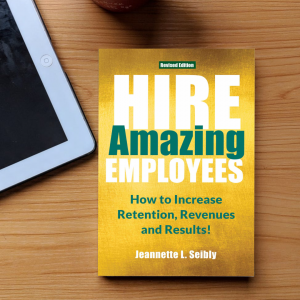
Do you:
- Deny having authority issues and place blame for mistakes on your boss?
- Look for approval from your boss and seldom get it?
- Ignore advice and instead argue for your point-of-view?
- Do it your way when your boss or board says, “No”?
- Have a team that bickers a lot?
Can you imagine NFL team players thumbing their nose at the coach when told to adopt a new game strategy? I cannot either.
Yet, many times, business leaders fail to work well with authority! They believe they know how things should work and fail to listen to sage advice on how it normally works. This closed mindset costs them valuable time, money, and energy that could have been better used for business success.
7 Tips to Improve Effective Working Relationships
- Recognize You Have a Problem. Awareness is the first step toward meaningful change. When you cringe because someone sounds like your mom, dad, or teacher, you have a trigger. Heal the relationship with your parent(s) and you will go further faster as a leader.
- Learn to Positively Handle Feedback and Criticism. Many times, when you get triggered, it has nothing to do with the feedback. It’s an automatic reaction from your ego saying, “Don’t talk to me that way.” Breathe. Put your feelings into words. Learn to ask questions for clarification. If you truly listen, you will find your boss’s insights (or someone else’s) were “right on.”
- Encourage Brainstorming and Listening to New Ideas. When you or your team know-it-all and rely only on past efforts, you will fail to get to the core issue or true solution. Be open to listening to others … it saves time and money while creating viable solutions.
- Resolve Conflict Before It Derails Results. Leaders who avoid authority often create unnecessary conflict. Their poor communication styles and inconsistent work ethics make it hard for team members to succeed. Unresolved tension drains energy and stalls progress. Proactive leaders seek coaching and support to address issues early—before they escalate and negatively impact performance.
- Learn to Delegate. If you want to achieve true leadership, you must stop doing it yourself and learn to trust your team! To expand your business, sales results, and influence with your team, create a team that is resilient, reliable, and resourceful. That starts with your willingness to listen and work well with your boss, board, team, and customers.
- Get Over, “Do It My Way.” Life is not about doing everything “your way.” Yet, there are many stories on social media about DIYers. It takes maturity and experience to work well with your boss, team, customers, business, and bottom line. You will make mistakes. But your ability to learn from those mistakes and seek counsel will improve your results.
- Take a Good Long Look in the Mirror. If you are a leader that acts as a lone ranger, be aware your team members will mimic you! While you may believe this is OK, at some point, it will create irrevocable issues at the wrong time! Learn to be coachable and understand there are other workable ways to get the best results.
Everyone has an authority figure: boss, board, team, and/or customers. They that provide invaluable feedback and criticism when you listen. Failure to listen and learn will sideline your career.
© Jeannette Seibly, 2021–2025 All Rights Reserved
 Jeannette Seibly is a legacy-driven Talent Advisor, Leadership Results Coach, and Amazon Best-Selling Business Author. For over 33 years, she has empowered thousands of executives and business leaders to achieve sustainable success through strategic hiring, values-based coaching, and intentional leadership development. Her work blends clarity, accountability, and soulful impact—activating performance and purpose at every level.
Jeannette Seibly is a legacy-driven Talent Advisor, Leadership Results Coach, and Amazon Best-Selling Business Author. For over 33 years, she has empowered thousands of executives and business leaders to achieve sustainable success through strategic hiring, values-based coaching, and intentional leadership development. Her work blends clarity, accountability, and soulful impact—activating performance and purpose at every level.
Take the time to develop effective working relationships, be coachable, and take feedback, while learning from your mistakes. This is can be impossible to do on your own. If this true for you, contact me for a confidential conversation.





 Jeannette Seibly is a legacy-driven Talent Advisor, Leadership Results Coach, and Amazon Best-Selling Business Author. For over 33 years, she has empowered thousands of executives and business leaders to achieve sustainable success through strategic hiring, values-based coaching, and intentional leadership development. Her work blends clarity, accountability, and soulful impact—activating performance and purpose at every level.
Jeannette Seibly is a legacy-driven Talent Advisor, Leadership Results Coach, and Amazon Best-Selling Business Author. For over 33 years, she has empowered thousands of executives and business leaders to achieve sustainable success through strategic hiring, values-based coaching, and intentional leadership development. Her work blends clarity, accountability, and soulful impact—activating performance and purpose at every level.
 Jeannette Seibly, an award-winning Talent Advisor, Leadership Results Coach, and Business Author, has guided thousands of executives and business leaders to achieve remarkable success over the past 33 years. Her specialty is delivering innovative solutions for hiring, coaching, and leadership challenges—with excellence and accountability at the core.
Jeannette Seibly, an award-winning Talent Advisor, Leadership Results Coach, and Business Author, has guided thousands of executives and business leaders to achieve remarkable success over the past 33 years. Her specialty is delivering innovative solutions for hiring, coaching, and leadership challenges—with excellence and accountability at the core. 

 Remember, use a
Remember, use a 